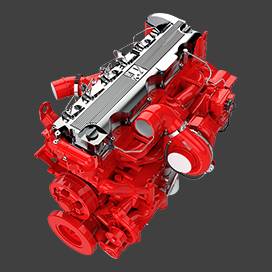Aug . 09, 2024 00:25 Back to list
Step-by-step guide for safely removing brake drums from your vehicle's braking system
How to Remove a Brake Drum A Step-by-Step Guide
Removing a brake drum can seem like a daunting task, especially if you're not a seasoned mechanic. However, with the right tools and a bit of patience, you can accomplish this job safely and efficiently. Brake drums are crucial components of a vehicle's braking system, and they need to be serviced regularly. In this guide, we'll walk you through the steps to remove a brake drum, ensuring you have a smooth and successful experience.
Tools and Materials Needed
Before you get started, gather the necessary tools and materials - A wrench set - A hammer - Screwdrivers (flathead and Phillips) - Pliers - Brake cleaner - Safety gloves - Safety goggles
Step-by-Step Guide to Removing a Brake Drum
Step 1 Prepare Your Vehicle
Ensure that your vehicle is parked on a flat surface and the parking brake is engaged. This is crucial for safety while working on the brakes. If you have a rear-wheel drive vehicle, you may want to block the front wheels to prevent any movement.
Step 2 Loosen the Lug Nuts
Using a wrench, loosen the lug nuts on the wheel covering the brake drum. You should turn them counterclockwise to loosen. Do this before raising the vehicle, as it’s easier to apply force when the wheel is on the ground.
Step 3 Elevate the Vehicle
Use a jack to lift the car and secure it with jack stands. Never rely solely on the jack for support, as it can fail. Once the vehicle is elevated, remove the loosened lug nuts and take off the wheel to expose the brake drum.
how to remove brake drum

Step 4 Inspect the Assembly
Before removing the drum, take a moment to inspect the brake assembly. Look for any visible signs of wear or damage. Make a mental note of how everything is assembled, as you’ll need this information for reassembly later.
Step 5 Remove the Brake Drum
Most brake drums are held in place by two or three bolts located on the back side. Use your wrench to remove these bolts. In some cases, you may need to tap the drum with a hammer gently to break it free from any rust or corrosion that may be holding it in place. Be careful not to use excessive force, as this may damage the assembly.
Step 6 Clean the Area
Once the drum is removed, take a few moments to clean the area with brake cleaner. This will help remove any debris or brake dust that has accumulated, giving you a clear view of the brake components.
Step 7 Inspect the Drum and Brakes
With the drum removed, inspect its interior for any signs of wear, cracking, or scoring. Additionally, check the brake shoes for wear. If either the drum or shoes are worn down, consider replacing them before reassembling.
Conclusion
Removing a brake drum is a task that can be accomplished with the right tools and a little know-how. Follow these steps carefully, and you’ll ensure that your brakes operate safely and effectively. Always prioritize safety by wearing gloves and goggles, and if you’re uncertain at any point, don’t hesitate to consult a professional mechanic. Regular maintenance of your braking system is crucial for your safety on the road, so keeping your brake drums in good condition is essential. Happy wrenching!
-
ROR Web Development: Build Fast, Scalable, Secure Apps
NewsAug.17,2025
-
Scania Brake Drums: OEM Quality for Optimal Safety & Durability
NewsAug.16,2025
-
R.V.I: Advanced Remote Visual Inspection for Precision
NewsAug.15,2025
-
Discover HYUNDA: Innovative Vehicles, Equipment & Solutions
NewsAug.14,2025
-
R.V.I: Unlock Advanced Insights & Real-time Performance
NewsAug.13,2025
-
Kamaz Brake Drum: Durable & Reliable for Heavy Duty Trucks
NewsAug.12,2025
